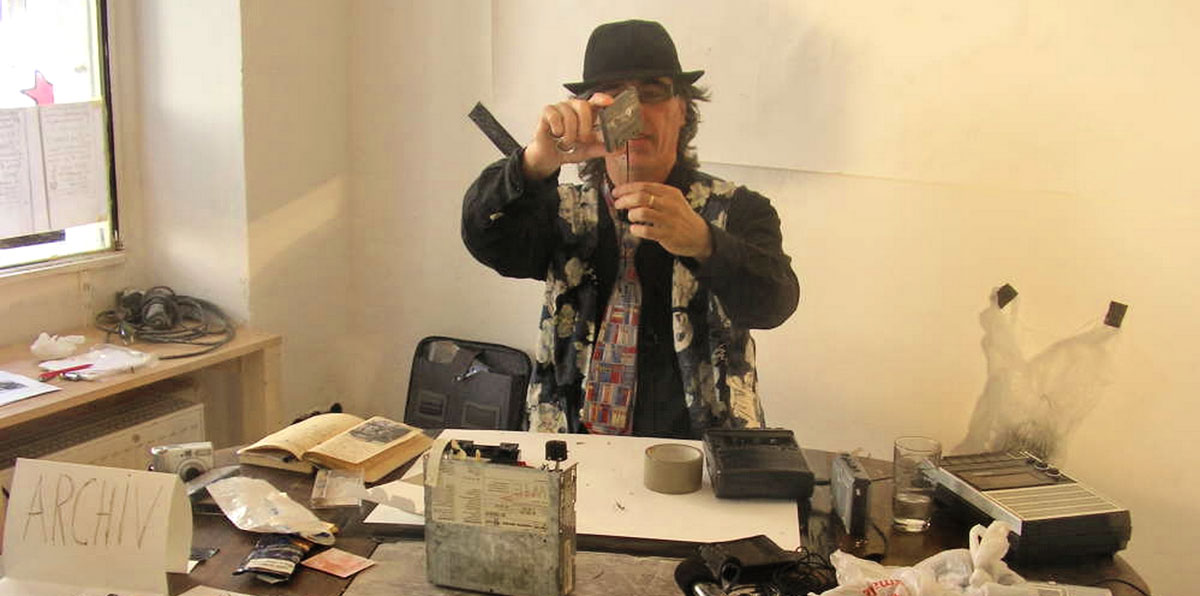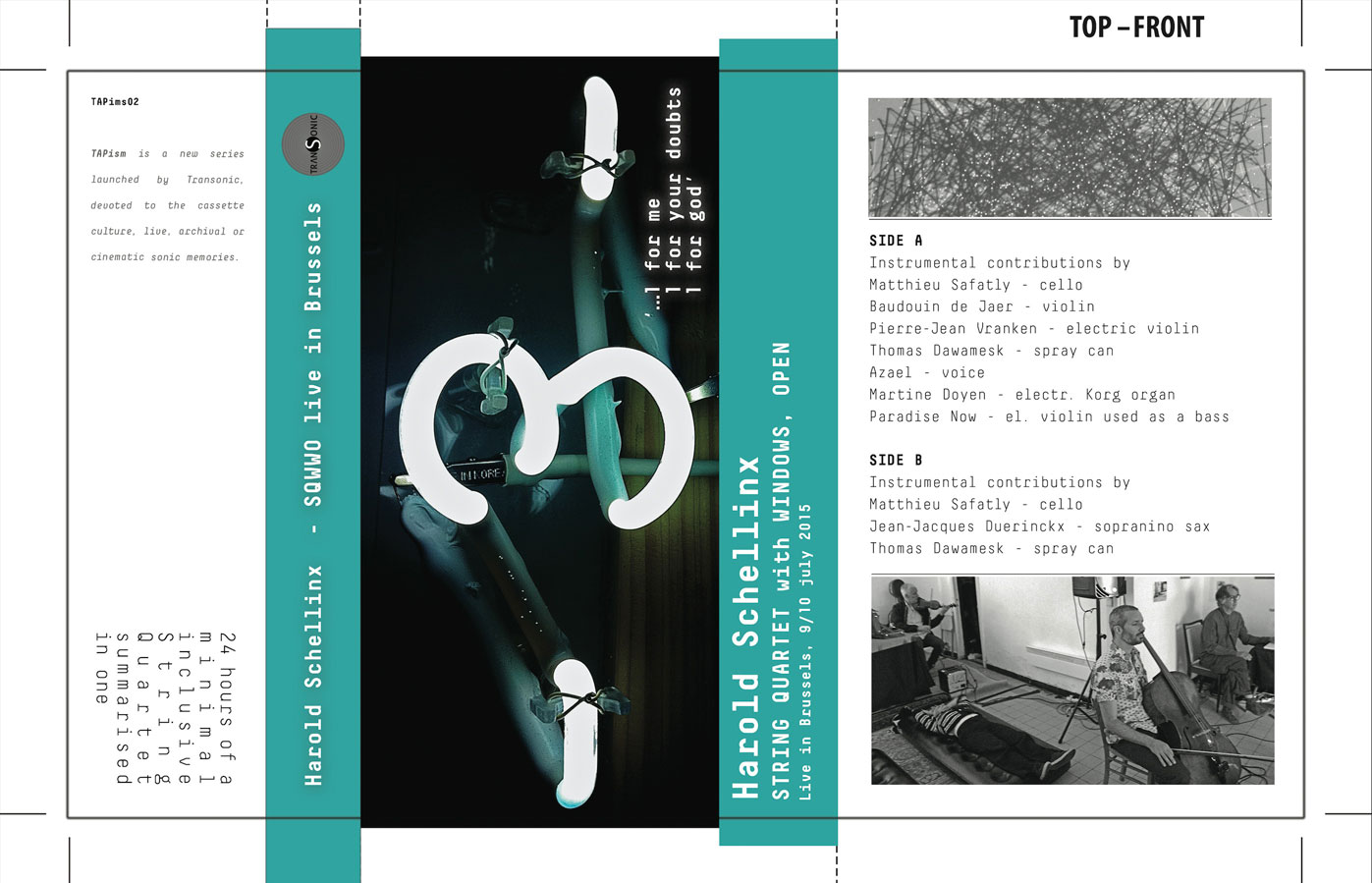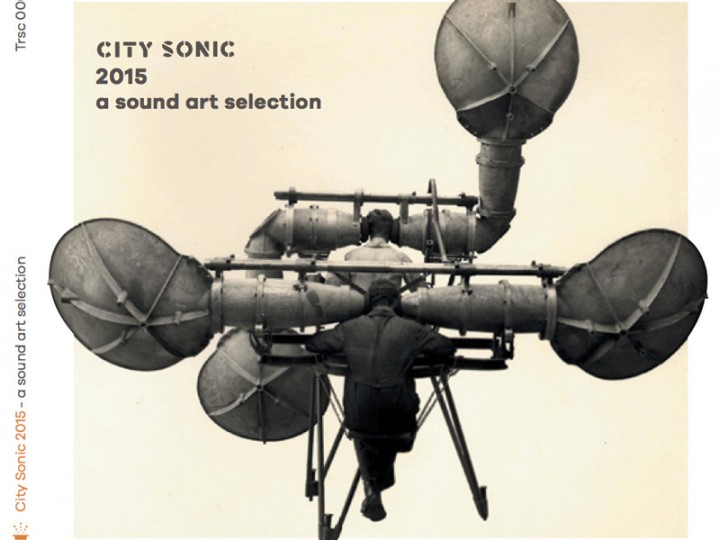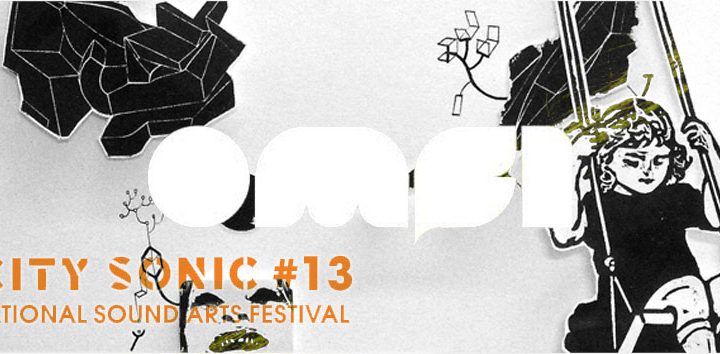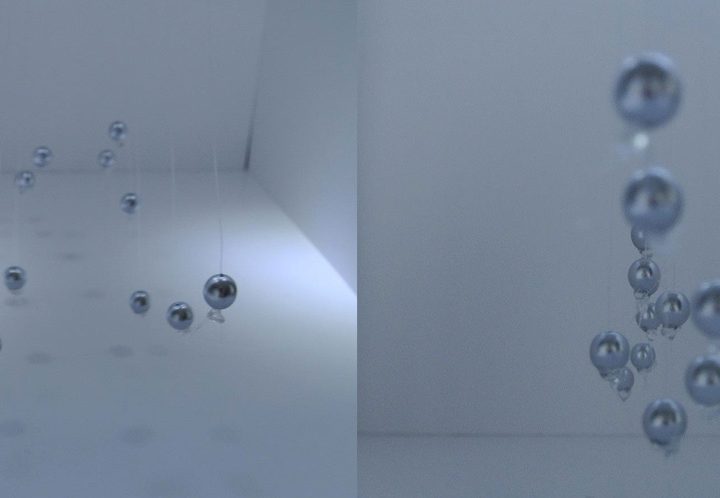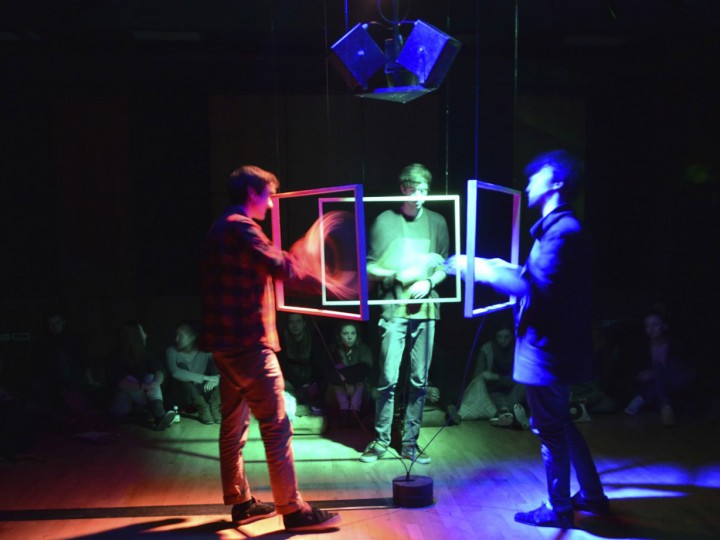Dégoteur de bandes magnétiques esseulées, remonteur de cassettes audio écrasées, stockeur de souvenirs jetés: ainsi va le paradigme sémantique du Foundtaping, acte de récup’ qui va sans doute émoustiller votre nostalgie de la mécanique bancale. Un des grands maîtres en matière de trouvailles phonographiques se nomme Harold Schellinx.
Au gré de ses vagabondages, depuis 2002 ce «cassettophile» et «cassetteur» néerlandais ramasse des bouts de bandes magnétiques abandonnées dans la rue, sur les parkings, les bords d’autoroutes et autres recoins urbains.Une fois le gibier analogique entre ses mains, il le ressuscite : démêlage de l’imbroglio de bandes, rembobinage dans une nouvelle cassette, écoute, sélection de fragments sonores numérisés puis collectés dans son exposition virtuelle.
Messages de répondeurs téléphoniques, récitations du Coran, patchwork musical, conférences, conversations privées… Texturé «noisy», craquelé, troué, ce médium organique, même en voie de décomposition, reprend goût à la vie entre les doigts avertis d’Harold, lequel passe un temps démentiel à dénouer les morceaux de bandes entortillées. Le monde précieux du souvenir analogique est enfin réhabilité et retentit a fortiori en mode déformé…
(Agnès Aokky, Rue 89 – mai 2008)
Présent dans l’exposition Cassette Art, Harold Schellinx officiera également en chair et en os en compagnie d’autres artistes à l’événement de clôture de City Sonic le dimanche 27 septembre composé de concerts et improvisations nomades au centre ville de Mons.
Interview
What attracted you in the handling of the cassette and the dictaphone?
Starting from the late 1970s, early 1980s, for several decades I used cassette dictaphones along with small lapel microphones to record what I call my ‘chronique sonore’: an ‘audio documententation’, of a very lo-fi and sketchy kind, of many of my daily routines; at home, in the metro, in the train, on the beach, in the restaurant… bref, everywhere.
I continued to do this ‘audio journal recording’ also during the ten, fifteen years (1984-1999) that I kept far from any ‘sounding music’ making (maybe -maybe- because I needed to recover from something like a ‘music allergy’, caused by over-exposure), tried to only make ‘music without sound’.
When, with the turn of the century, I found that this idea was an ‘idée fixe’, really just a ‘mirage’, an illusion, and I decided to return to ‘sounding music’ making, it felt logical, and maybe even necessary, to do so NOT with the usual instruments, but by delving into this vast ‘cassette archive’ (rather more of a ‘dump’, actually) that I had gathered, with near to thirty years of ‘audio memories’.
That’s how around 1999 I started to compose short pieces (in the beginning still on a TEAC 4-track analog tape machine), exclusively using material from my ‘personal audio archive’ ( https://soundblog.bandcamp.com/album/sound-chronicles ). For me, this felt like some ultimate form of pop music: making up stories that are built from the day-to-day sounds of your own life 🙂
Not much later I began to do something similar in live settings, mostly in Paris. At first by (solo) executing quite elaborate and pretty detailed scripts, using a whole battery of cassette machines to mix longish ‘audio stories’.
It was in the course of these live performance settings that gradually (along with several of my friends and colleagues) I uncovered the quite peculiar potential of, especially, handheld dictaphones not merely as playback machines, but as electro-acoustic instruments. However farfetched it may sound, as Emmanuel Rébus likes to say: « A dictaphone is very much like a trumpet; both of them have three buttons! »
What I find attractive about the ‘dictaphone-as-instrument’ approach:
1° – it allows for a very mechanical, very physical manipulation
2° – it is very limited in its possibilities, but that’s of course a blessing for all who think – like me -that limitation is always a strength
3° – It is impossible to gain perfect control; the little machine continues to show some sort of a will of its own
4° – sooner or later all the world’s dictaphones will break down, and become beyond repair; I love this ephemerality, using things that are sure to disappear 🙂
How do you integrate this medium in your compositions?
There are two important aspects to this:
1° – a narrative one – this of course depends on what is actually recorded onto the cassette that one uses; I once estimated that in the 50 years of its existence, about 8.55 billion kilometers of cassette tape has been recorded onto; pretty much all the sound of the world can (or could) be found on cassette (it is the – Dutch – title of a small booklet that I wrote on the Found Tapes Exhibition: « Alle Geluid van de Wereld »);
2° – the sonic one – this is what the ‘dictaphone-as-instrument’ is about; important elements are also the typical lo-fi texture of the cassette sound, the noise, the gradual disintegration of the sound and its quality; what is on you cassettes is, in a way, alive: a cassette that one uses regularly in performances never sounds the same twice… (OK, good slogan this one; let’s keep it: « K7’s never sound the same twice! »)
Though I cannot promise you that it will ever be finished, let alone published: I am also writing a book called ‘The Art of the K7’ (referring, very blasphemously to Bach’s ‘Art of the Fugue 🙂 …) that – apart from a lot of K7 stories, K7 facts and K7 history (NOT ‘cassette culture’ history though; that history has been written already) will see an exhaustive description and index of all the possible different performing techniques using cassette players and dictaphones, each one with an exemplary, generic, score for a piece based on that technique.
Among the non-standard techniques, let me mention my ‘Sudoku’ technique (https://soundcloud.com/soundblog2/harold-schellinx-k7-sudoku-solution-disquiet0139-techtechnique ). It is a way to apply something very much like a ‘serialist’ form of composing/playing to the dictaphone. It can, however, only be used with certain models of a dictaphone. And much to my regret, the one that I used for Sudoku playing (a Sony TCM 500DV) broke down, and I haven’t been able to replace it yet …
(A prelude to The Art of the K7 is on harsmedia.com)
You have often collaborated with other cassette artists (Emmanuel Rebus or recently Anton Mobin for example)… what brings you these cross improvisations?
Ha, ha! It is so great to be in a band! All the touring, the sex, the drugs, the rock-n-roll… But, seriously, in the past ten years it has turned out that group live improvisation is one of my major musical destinies. Not so much as a choice, but as something that I experience happening. And it is so great to spend musical and sonic time with friends that are also fabulous musicians and theoreticians like Anton Mobin, like Emmanuel Rébus; not to forget the many others, like Jean Bordé, Rinus van Alebeek, Maurice Charles JJ, Peter Mertens, Antony Carcone, Jacques Foschia… ; the hours spent making music together with these guys continue to be among my best living hours, without a shadow of a doubt.
Apart from that, yes, I do have quite particular thoughts on the ‘genre’, but that again would ask for something much like a book. Basically, of course, it is what one calls EAI (electro-acoustic improvisation). Rébus and I wrote about that in our academic paper ‘Electroacoustic improvisation as metalanguage and fixed point’ (part I appeared, in a Hungarian monograph; the sequel and second part will be in Korean). I do have some pretty non-standard ideas on this, which center specifically on our practice as being a highly non-academic one, and rather close in spirit to a kind of neo-folk music. I am kind of allergic to the designation ‘experimental’. Though there are, of course, some historical reasons for that name), I rather like to call what we do ‘speculative music’.
With Rébus I organize an ongoing series of ‘speculative musical events’ that we call ‘unPublic‘ (because they are always without audience), and which recently reached its 20th edition. Until now ‘unPublic’ included contributions from near to 40 artists and musicians from all over the world. This ‘unPublic’ gradually is becoming a quite central illustration of our musical philosophy and politics, as well as a ‘sounding summary and history’ of our diverse activities.
You started several years the series « Found Tapes ». What attracts you in this process-research?
I started collecting tape trash and the ‘Found Tapes’ series in 2002. So that is 13 years ago… And much of it originally was motivated by simple curiosity: when I saw a clod or a string of this brownish cassette tape floating around, I was just very curious to know what would be on it. And contrary to photographs: it is impossible to see the sound. You will have to pick it up, unravel it, and make it playable again.
What then is so utterly fascinating, apart from the ‘degraded sound’ and ‘natural glitch’ that I like a lot, is the wide range of different things that appear to be on these ‘trashed tapes’. Lots of music of course; but also music that seemed to be very much related to the demography of the places were it was found; it turned the collecting into kind of a personalized socio graphic study 🙂 because also, apart from the music: I found amazing recorded telephone conversations, religious sermons, instructions for this or for that, stories, personal tales that are almost ready-made scripts for detective stories; and beautiful spoken letters, like the one that I will use during the OMFI Parcours at City Sonic, which is a spoken diary annex love letter that a Greek girl sent to her Amsterdam summer boy friend, and that I picked up from the pavement in Amsterdam early 2009. So that’ll be kind of a ‘found narrative’. For historical reasons I call it ‘She used a little rouge’; the City Sonic version is the ‘soul version’
We can say that you also have an archivist activity as you rescue from oblivion the content of these founded tapes.
It probably is due to my tendency to do work that appears in long series that continue over many, many years (like the Found Tapes Exhibition, my SoundBlog, or – of more recent beginnings – the ‘unPublic’ series, that people often look at me, first of all, as a collector or archivist; and then second (because I often use analog and other obsolete media) as a ‘retro-fan’, a ‘Monsieur Analogique’ and an eulogist of something like ‘the good old days’.
All of that, though, is just trompe l’oeil.
Also with respect to my bible sized ULTRA book (in Dutch), which – disguised as a comprehensive history of ‘Ultra’, the Dutch version of experimental post punk music – in fact is a highly personal and autobiographical account of how a young Harold lived through and experienced the very turbulent but also very creative and exciting days of artistic and socio-political uproar in the late 1970s and early 1980s.
‘ULTRA’ really is a Bildungsroman (and not even merely in disguise). Moreover it is a very good one, if I may say so myself 🙂 – spiced with a pretty much encyclopedic account of Dutch underground experimental pop of the period 1978-1983, what you get is sort of an ‘auto-portrait of the artist as a young man’, and a clear-cut illustration of my ‘philosophy of history writing’, exemplified by the book’s motto (which is a quote from Orwell’s 1984: ‘Who controls the past, controls the future [;] Who controls the present, controls the past’ …
I remain very thankful to the editor, Oscar van Gelderen, who commanded the book as part of a series of books on the independent art scene in the Netherlands in the 1980s, and gave me all the freedom as well as the means to write a thing like this in just a couple of months. I would never have been able to stand living with my own past for much longer that that 🙂
Personally and artistically highly significant, as the book frames and closes a period in my life that was followed by many years in which music for me were mostly un-sounding ideas, that only began to start sounding again at the turn of the century… Actually, in that sense ‘The Art of the K7’ will be a sequel to ‘ULTRA’. Sort of like ‘Ultra. The re-awakening’ … Otherwise, I am not at all history-minded, and against anything that smells of ‘re-union’ and ‘retro’. The only time that counts is NOW; and it better be different from all the time that went before.
What future do you see for the audio tape in our « all-digital » era?
For someone who almost willy-nilly has been associated with cassette tapes for most of his life (the legendary Staalplaat label and cassette store actually came into existence because Geert-Jan Hobijn got inspired by an article that I wrote in the very early 1980s on the then beginnings of cassette culture), it is interesting to see how a new generation of music makers re-discover the fun of cassettes as easy-to-personalize objects, and put out a lot of really interesting and worthwhile music on cassette.
But I am not a tape fetishist.
If tapes were to disappear from the globe entirely – which eventually of course they will – I will not shed a tear (only hope to still find some of them in the trash though, of course 🙂 … For the moment: I guess that cassettes will continue to flourish in fringe settings, as collectables for amateurs of less common types of music, for as long as there will remain at least one factory able to make a profit by producing blank audio tapes.
What is maybe less evident is whether someone will continue to produce the necessary playback and recording equipment. Already now, performing with cassette machines becomes more and more like performing with antiques; dictaphones and other cassette/tape players are becoming more and more prone to malfunctioning, as well as ever more expensive to replace.
But as I mentioned before: I actually like – and in a way use (or mis-use) – the fact that over the years, as a ‘cassetteur’ (that is how blogger Mark Weidenbaum at some point baptized our Parisian community of K7-artists) my instruments gradually disintegrate, start to malfunction, break down, and eventually disappear altogether.
Eventually, I will be left with nothing at all to play and perform with. Except for the tapes that I can throw around and smash; tramping and stomping them around in a big basin, like stomping grapes for making wine … 🙂
And yes, I actually love digital. Did I mention the iPhone apps that I produce with the ookoi? Or my ‘Große_Fuge.mp30000’?
So no. No regrets. Never.
One world lost, another one gained.
Never look back, unless it is to look forward.
What connections do you see between your sound artist and mathematician activities?
And yep! That is the third book … It will start by explaining how, when Iannis Xenakis died, and I went to Père Lachaise to attend his incineration together with somebody else that I bumped into when exiting gtom the metro (we actually followed one another), I ended up at the wrong funeral…

